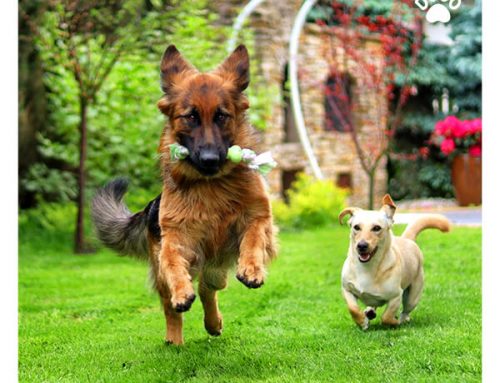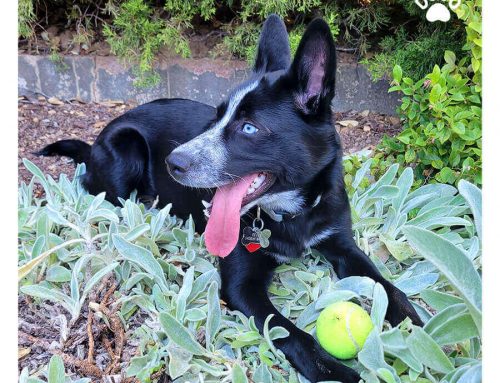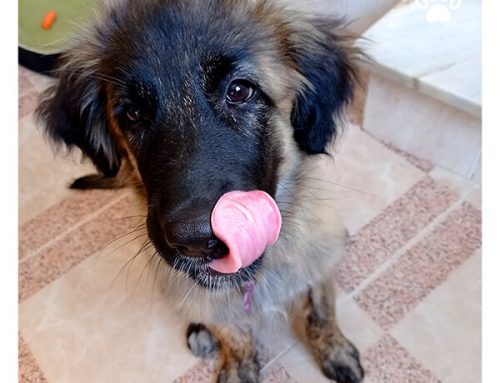It is a common question from most owners, especially when they have a puppy: When can I start bathing my dog? Find out when and how to transform the bath into something positive in our article.
When the puppy is still with the breeder
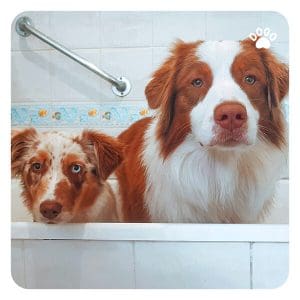
The breeder should do this gradually, starting with alcohol-free baby wipes, letting them play on a wet towel, then in a small pool with water, prepared for this purpose. The pool should be only 1 centimeter deep and puppies should be able to discover it and approach it by themselves. It should be a positive and fun experience for the puppy.
When the puppy comes home
If your puppy has not had that previous experience with the breeder, you can do it at home. Start by breaking up the bath into fun and positive steps. In this phase, you can help the puppy, by touching the water so they can see that it is not dangerous, or you could even associate all those small steps with food or a treat that your puppy likes very much.
It is very important to do these little introductions to water on various occasions, in many sessions. And gradually make it look more like a bath until you actually use soap.
Difficulties with the bath
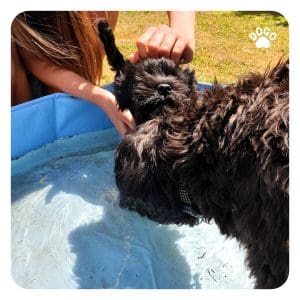
However, you can also apply other strategies that will make your dog more comfortable with the bath, such as letting them lick some pâté for dogs. This way, your dog’s mind can forget about the bathroom and focus on something as good and positive as pâté.
Another useful technique that pet parents can use to help their dogs overcome their fear of water is desensitization training. This involves gradually exposing the dog to water in a controlled and positive way, starting with just a few drops of water on their paws and gradually working up to a full bath. Pet parents can also try using a shower attachment or hose instead of a traditional bath, as some dogs may find this less intimidating. It is important to go at the dog’s pace and not rush the process. With patience and persistence, most dogs can learn to tolerate and even enjoy bath time.
Bath frequency
Some people bathe their dogs very often, claiming that the dog smells bad. However, the dog’s bad smell is a consequence of frequent baths, for example, several times a week, or once a week. Frequent baths spoil the layer of fat that protects the puppy’s skin, this degeneration, and its subsequent recovery is what makes the dog smell bad. That can lead to other problems such as dermatitis or fungus on the skin.
If we want a clean dog, with a good smell and healthy skin, the minimum time between two baths is 2 weeks, to give enough time for the complete recovery and stabilization of the dog’s protective fat layer. However, fewer baths would be the ideal choice. 2 to 4 baths per year is the best option for most dogs.
Brushing the dog frequently is the best way to keep them clean. Brushing removes dead hair and helps avoid allergies in allergic pet parents.
While it is important to avoid over-bathing a dog, it is also important to keep their coat clean and healthy. Regular grooming, including brushing and trimming, can help remove dirt and debris from the coat and prevent matting and tangling. Additionally, pet parents can use natural remedies such as apple cider vinegar or coconut oil to help soothe and moisturize their dog’s skin and coat between baths. It is also important to choose the right shampoo for your dog’s specific needs, as some shampoos may be too harsh or drying for certain skin types. A veterinarian or groomer can provide advice on the best shampoo and grooming routine for your dog.
Wait for the vet’s authorization
We must always have the help, guidance, and accompaniment of the veterinarian. When our dog is still a puppy, it is the veterinarian who must give their authorization for all the preparation and contact with the water. We should wait for the green light from our vet to expose the puppy to soap for the first time. It is also important to ask the vet what is the best soap for our puppy or adult dog. Soap’s pH differs and a soap appropriate for an adult dog, might not be suitable for puppies’ skin.

Other dogs, with different hair lengths and textures, may need the help from a pet groomer, such as Schnauzers, whose dead hair must be professionally removed because it may not fall out naturally. In other words, make sure to get the advice of a qualified professional before you bathe your dog for the first time.



